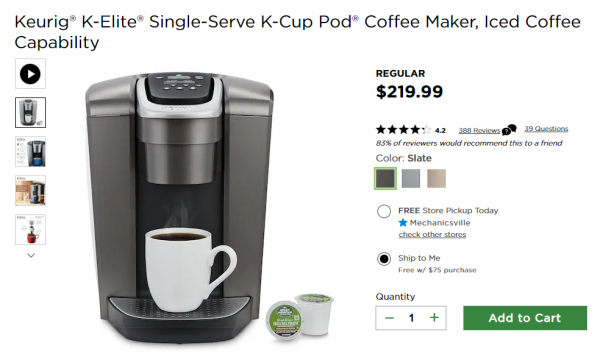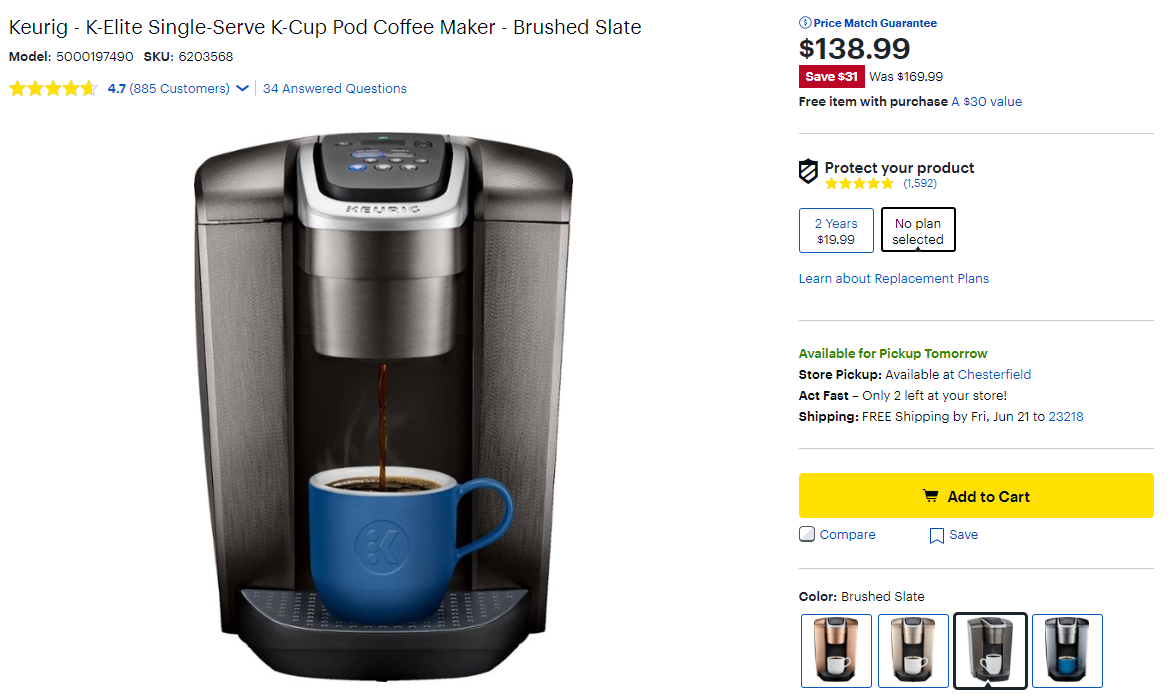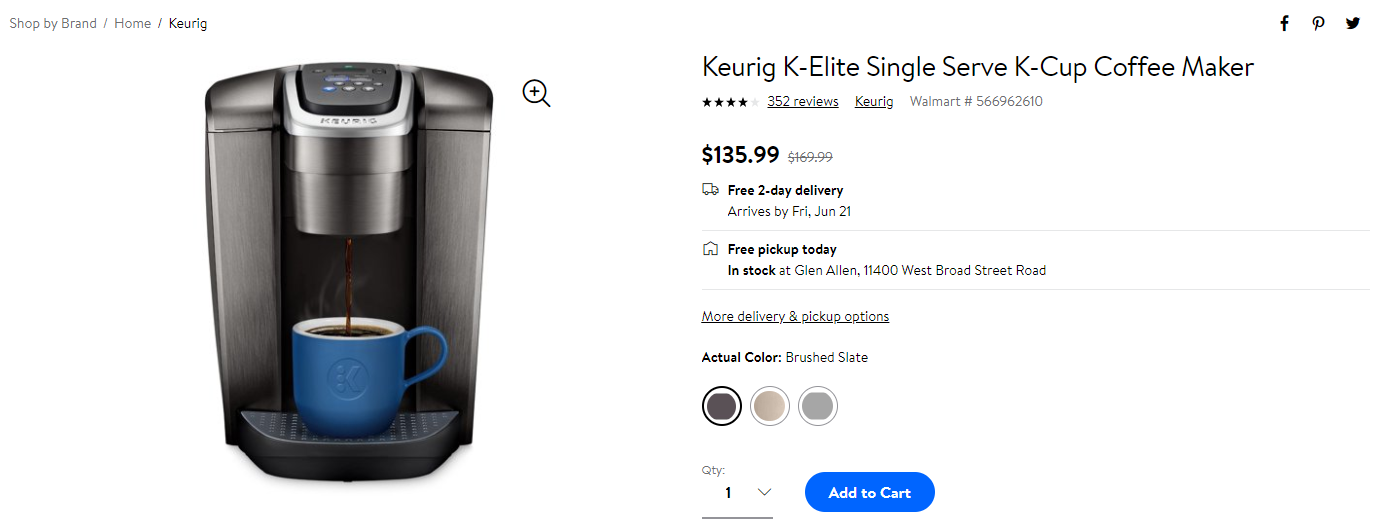I was convinced that only brick and mortar stores sold identical products at different prices. Like many shoppers out there, I am even more perplexed when I see identical products sold at different prices at online stores. How do I know whether I am getting the best deal? Why do retailers offer the same products for different prices? I discovered the truth about different pricing at different retailers for the same product not only as a shopper. I gained an insider’s knowledge when I worked at one of the most beloved American e-commerce companies! Let me share with you what I learned.
You can find out more about the following:
Why price differences at physical stores
How to get the best pricing at physical stores

Why do brick and mortar stores charge different prices for identical products?
There are at least 3 reasons why two different stores, say Walmart and Sears, charge two different prices for the exact same products.
- Differing cost structure. Each business is set up a little bit differently. They have different operating costs, overhead costs, as well as fulfillment and delivery. Let’s be real: some businesses are more efficient than others. While some businesses are extremely slow to change the business model and to progress (e.g. K-Mart, Sears), some are swift and thriving (Wegmans, Bed Bath and Beyond, Walmart or Target). Because of the differences in cost structure, retailers with more inefficiencies may charge more than efficient retailers for the same product.
- Physical location of a store. Though cost structure is certainly one of the reasons, location plays a significant role in pricing. New York City shoppers will tend to pay more for a Keurig coffee maker than Idaho-based shoppers. All ties to expenses. Office spaces are much more expensive in New York than in Idaho. Businesses need to pay more in salaries in larger and more competitive areas such as New York. All of these location-driven costs need to be passed on to shoppers.
- Price discrimination. While cost structure and location play a role in different pricing for an identical product at different brick and mortar stores, those stores also practice price discrimination. They want to maximize their profit by charging consumers who can afford to pay more. A median salary is much higher in Boston, MA, than it is in Jacksonville, FL. With that, brick and mortar retailers charge more in Boston than they do in Jacksonville, for the same product.
- Profit expectations from investors. Last but not least, there’s the “big” business and the expectations from investors. Investors would love to see high profitability, amazing revenue and all-around beautiful return on their portfolio. Unfortunately, some national brick and mortar stores have no other way of increasing their profitability than by charging consumers more.
What can you do to get your price the lowest at brick and mortar stores?
Though many brick and mortar retail stores are slowly changing dinosaurs, there is some silver lining. I have successfully attempted the following tricks to get my price to be at the lowest:
- Use coupons. Some retailers offer amazing coupons, which make the price below anyone else in the market. For instance, I have used Bed Bath and Beyond coupons dozens of times. Frequently, I was able to secure the BEST prices. Even if you are not registered, you can take advantage of some of their coupons through retailmenot. Just show the barcode on your phone, and voila! You can save 20%.
- Ask for price-matching. If you are able to find the same model number at a different store (Walmart, Wayfair, etc.), you can try asking for price matching. Many brick and mortar stores do not have those policies publicly listed, but they do exist. I used this trick at Best Buy several times, which saved me hundreds of dollars (in the case of TV), and dozens of dollars (in case of one of the best drip coffee makers).
- Purchase in states with no sales tax. Those states are Alaska, Delaware, Montana, New Hampshire and Oregon. I kid you not. I used to live in northern Massachusetts for a period of time, and I did most of my shopping in New Hampshire. I remember buying an iPhone, which at the time sold for $799 + tax. In Massachusetts, I would have paid additional $100 in taxes. In New Hampshire, I paid $0.53. I saved $100.
Identical product, different price, different ONLINE store
Recently, I was shopping for a Keurig K-Elite coffee maker. I checked out different stores, and I was quite surprised.
Kohl’s was selling it for $219.99.

Best Buy for $138.99.

Walmart for $135.99.

Here’s another example. This time, I looked into Cuisinart 14-cup programmable coffee maker (DCC-3200).
Price of Cuisinart coffee maker (DCC-3200) across different stores
Whoa! Why such a different pricing on an identical product?
Do the principles of economy not work anymore? Shouldn’t consumers be naturally moving to where they can find the best offer?
While I understand that it might be more challenging to find another brick and mortar store to purchase, buying online has made it so easy to find the best deal for a product.
Yet, many online retailers sell identical products for different prices.
Why?
Reason #1: Online price tied to a brick and mortar price.
Some brick and mortar stores such as Walmart or Target also sell online. Their prices are typically tied to avoid consumer confusion. Whatever price they sell at in the store is whatever price they sell at online. As mentioned above, there are multiple reasons why brick and mortar stores sell the same product at varying prices.
Reason #2: Massive shipping costs.
Learning how businesses are set up to minimize shipping costs was a true learning experience during my time at Wayfair. I have learned that Wayfair truly is among the best positioned company to absorb costs of heavy and bulky items to ship, thus allowing Wayfair to be among the most competitive and consumer-friendly online retailers. Let’s look at a couple of examples how shipping costs vary by online retailers:
Large and bulky products tend to be cheaper at brick and mortar (or Wayfair!)
-
- Brick and mortar: brick and mortar stores such as Home Depot, Walmart or Target typically offer the best pricing for heavy, large and bulky items. Those items are delivered to physical locations on one big truck, thus minimizing the cost of freight. They pay once for several large items to be delivered.
- Online: online retailers are at a disadvantage when it comes to the shipment of large, bulky and heavy items. There are two reasons for this. First, when I purchase a couch from an online retailer, an online retailer needs to ship one large couch individually to me, which costs a lot of money. Second, that online retailer needs to receive this couch from a manufacturer in the fulfillment center. That means that the couch needs to be shipped twice: Manufacturer -> the fulfillment center -> End consumer. Online retailers needs to pay for each individual shipment, which costs a lot of money.
Small and medium sized items should be cheaper online as there are no overhead costs.
Reason #3: Expensive workforce in metropolitan areas.
Similarly to brick and mortar stores, online retailers are headquartered in various parts of the country, thus stipulating overhead costs. While two large online retailers are based in large metropolitan areas (in Seattle, WA, and Boston, MA, respectively), other stores such as Walmart, Target or Jet are based outside of such expensive workforce. Sometimes it’s better to buy product directly from the producer.
Reason #4: Reduced warehouse costs through automation
Some online retailers such as Wayfair have truly revolutionized supply chain and warehousing. They have automated their warehouses significantly, thus decreasing warehouse costs. For that reason, they are able to offer more competitive prices to end consumers.
Reason #5: Automatic price matching.
Some online retailers like Wayfair have done amazing things to define customer service. I will soon write an article how Wayfair typically provides the most competitive pricing. However, Wayfair has an amazing algorithm which analyzes thousands upon thousands of websites to find the lowest price of any given product. When the algorithm finds it, Wayfair typically automatically matches that price for a consumer.
Reason #6:Different margin goal for the business.
That one is similar to physical stores. Online retailers are infamous for low margins. They want to offer lower pricing to entice consumers.
How do I know if I am paying a good price for my product?
- Check out Owly Choice regularly. We post great deals and products regularly. We include the price range that the product typically sells at. If your price is anything less than what we have determined, you are likely looking at a phenomenal deal.
- Check out Slick Deals. I have found Slick Deals to be an amazing platform for deal shopping. Deals are generated by users who tend to find and post some really good deals out there.
- Take advantage of CamelCamelCamel. If you are an Amazon shopper, and would like to determine whether the price of a product is competitive, you may be able to look at the historical price of that product on Amazon.
Where do you typically see the prices to be the lowest? What do you think about stores charging different amounts for identical products?
Please leave your comment below and share this with your friends!

Is there any website to monitor prices and deals in other retailers similar to camelcamelcamel for Amazon?